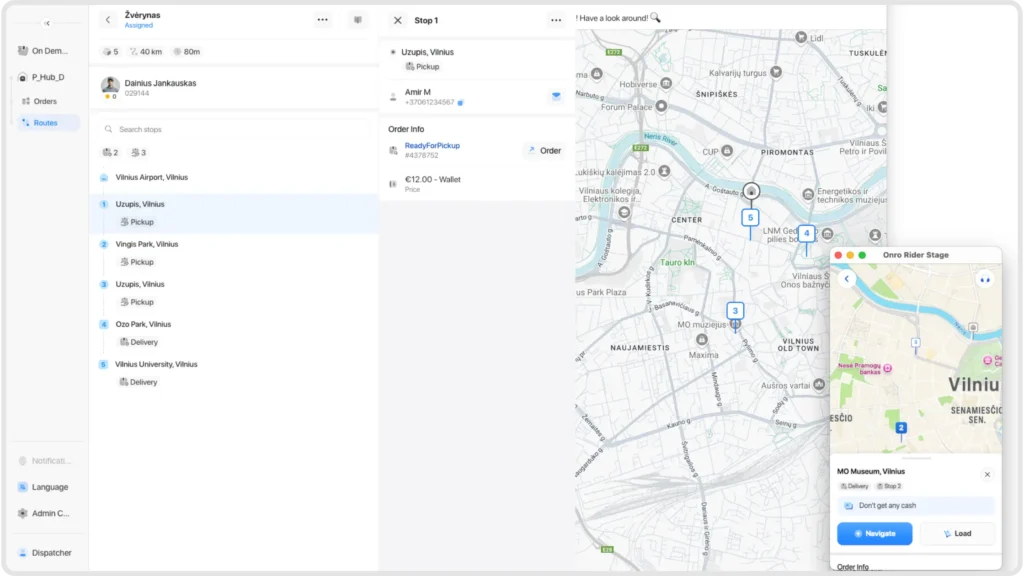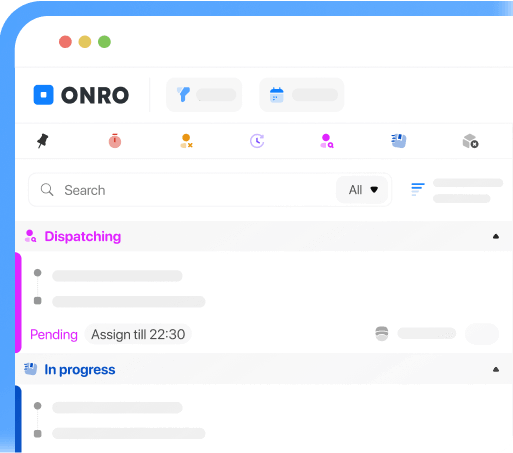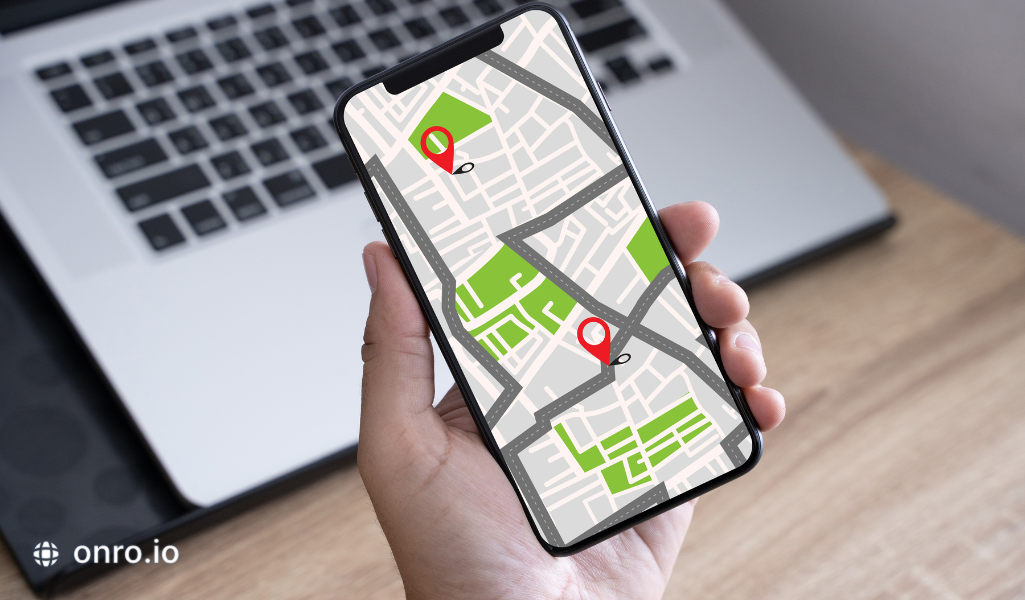Are your deliveries losing money and time due to archaic routing methods? Route optimization tools can save your fuel, reduce delay, and keep their customers happy. But what is the best solution? Look at the tools to check out in 2025 and change your logistics! Read on!
Try Onro for Free
Get your free access to the Onro All-in-one Last Mile Delivery Software.
What is a Route Optimization Tool?
Routing optimization tools employ algorithms and data analytics to facilitate the delivery planning process. The optimization algorithms consider several thousands of key elementary variables such as traffic situations, delivery time windows, vehicle capacities, and current weather conditions to prepare the most optimal routes in the system.
Manual route planning was cumbersome, tedious, complicated, and error-prone when manual input was applicable, using van drivers and dispatchers with spreadsheets, whiteboards, and maps. Today, such bottlenecks with route planning with strong AI would be eliminated on lesser manual intervention. It would save money on fuel costs and delays while increasing utilization of the fleet and on-time deliveries.
Through intelligent algorithm routing updates to legacy systems, the organization strives for satisfied customers, operational efficiencies, and low costs in the seamless last-mile delivery management context in a fast-moving environment of logistics.
Static vs. Dynamic Routing: Choosing the Best Route Optimization Tool for Last-Mile Efficiency
The Route Optimization Software allows for three methods of routing:
- Static routing that is planned for either quarterly or monthly periods;
- Dynamic routing, whereby routing is performed on a day-to-day basis for betterment of last-mile efficiency;
- And static plus dynamic routing where routes can be modified per new orders or real-time updates on ground conditions.
Hence, the Traveling Salesman Problem represented in the application tends to give some enhancement to routing while solving the mature problems with available drivers, truck capacity, customer time windows, traffic conditions, service time, etc., and even weather. Thus, machine learning techniques could be optimized for a better future rendition of the dynamic grid of interacting variables.
Static Routing vs. Dynamic Routing in Route Optimization Tool
Static routing has its basis in fixed routing methods of operation, which usually stand for calls from annual to quarterly. It, therefore, has no power to adapt to change. Though exceptions might stand, it forces manual check-ups on a status more than not. A very heavy workload on the dispatcher is imposed by the rigid nature of static routing, as this process requires intensive rerouting and redesign of structures. The added burden recursively leads to uncertain ETAs, an increase in delivery delays, and adverse fuel-maintenance cost implications. Moreover, it adversely affects customer experience with less visibility and inefficient communication.
Dynamic routing is the opposite. It is indeed very dynamic, which entails rerouting based on live conditions such as real-time traffic conditions, weather conditions, and fresh order placement. The real-time optimization of daily deliveries allows dispatchers to do the least amount of work while drastically reducing delays and ensuring accurate ETA calculation and on-time delivery. This saves the company money on fuel and overheads. Customers then have an enriched experience in terms of real-time information, good communication, and visibility of deliveries.
| Features | Static Routing | Dynamic Routing |
|---|---|---|
| Definition | Fixed sequence of stops, built annually or quarterly. | Routes optimized daily based on real-time data. |
| Flexibility | Minimal variation, rigid structure. | Adjusts to new orders, traffic, weather, and other factors. |
| Efficiency | Requires manual adjustments. | Automatically optimized for each day. |
| Dispatcher Workload | Requires manual route planning. | Software does the optimization. |
| On-Time Deliveries | Frequent delays. | Reduce delay causes. |
| Estimated Time of Arrival (ETA) | Highly inefficient due to fixed routing. | Real-time communication is good for efficiency. |
| Cost | High fuel and maintenance expenses. | Optimized routing means reduced expenditure. |
| Customer Experience | No visibility into delivery. | Good communication and good tracking. |
Top Features to Look for in a Route Optimization Tool
When making a decision on which route optimization tool to best use for his/her delivery business, a user must consider the following features:
- Dynamic Routing allows for immediate rerouting of their drivers upon any delay or jam.
- Systems such as Geofencing create a virtual barricade that triggers alerts and changes beyond its border.
- User-friendliness with an intuitive visual and navigation aspect.
- Able to integrate GPS and Telematics for real-time monitoring and vehicle real-time tracking.
- Delivery Window Management is done to ensure that deliveries arrive at the correct time.
- Scalability and Customization mean that this solution can grow with the organization and suit the organization’s needs.
- Analytics and Reporting help understand performance and efficiency.
- Mobile Access allows a driver to view his routes using a mobile app.
- ERP-CRM Integration ensures that the Delivery Management Solution integrates into the larger scheme of worldwide business systems.
- AI in last-mile delivery and Machine Learning provide the utmost functionality with routing by training routing algorithms with accurate field-derived intelligence.
Why Should Business Invest in Route Optimization Tool?
- Cost savings: Routing optimization allows for saving fuel and other operational costs while the vessel is running.
- Enhanced productivity: Helps to plan schedules for the drivers so that idle time is reduced.
- Customer experience enhancement: Offers time-sensitive deliveries with accurate ETAs and live tracking.
- Management of resource utilization: The fleet utilizes the least resources through optimized routing.
- Management of blockage: Helping companies manage disruptions and delays.
- Eco-friendly: Minimum distance to ensure lower carbon footprint.
- Competitive advantage: Creating efficiencies in logistics operations to win competitive points.
4 Top Route Optimization Tools in the 2025 Market
1. Onro

Onro route optimization software is used to maximize delivery efficiency. It allows business owners to plan and optimize delivery routes either in real-time, for same-day delivery, next-day delivery, or multi-drop deliveries. Onro features are designed to give utmost efficiency and reduce delivery time and cost for businesses and the clients.
Key Features
- Automated Route Planning
- Accurate ETAs & Real-Time Tracking
- Multi-Stop Optimization
- Proof of Delivery & Barcode Scanning
- Automated Customer Notifications
- Seamless Integrations
Onro is the ultimate all-in-one courier management software. Manage delivery with minimal hassles in a cost-effective manner. Delivery Notification is available through SMS, email, and push notifications. Set pricing mechanisms and auto-assign orders to the driver. Store customers frequently used addresses and dispatch on the basis of zones. Manage drivers’ and customers’ digital wallets. Chats and surveys enable real-time communication and feedback. Custom branding is available for your company and your tracking page.
Try Onro for Free
Get your free access to the Onro All-in-one Last Mile Delivery Software.

2. Upper
Upper is the route management software intended to eliminate the problems of manual route planning. Gone are the challenges of communication barriers and inefficiencies as Upper promotes collaborative route optimization with teams of all sizes, from small start-ups to huge enterprises.
Key Features:
- Dynamic Route Updates
- Optimal Stop Order Calculation
- Delivery/Service Time Windows
- Accurate ETAs
- In-App Navigation
3. Routific
Routific provides a basic route optimization tool and an excellent delivery management tool. It has an impressive user-friendly interface and easy setup. Routes are well-optimized based on traffic considerations and driver preferences. However, advanced features like live tracking and proof of delivery are reserved for higher plans, while clustered stops and complex delivery requirements lag back. Still good for pretty simple delivery operations.
Key Features
- Clean but slightly tricky user interface
- Simple setup, tricky adjustments
- Adequate with some inefficiencies in routing
4. MyRouteOnline
MyRouteOnline is a simple route planner that fulfills basic requirements for fast address uploading and delivery optimization. Works best for route planning with a few stops, but there are no advanced features such as real-time driver tracking and automatic customer notifications. The credit-based pricing passed scheme, however, can become unmanageable for businesses with more intricate requirements.
- Basic and simple user interface
- Route optimization felt a little basic
Conclusion
Onro is the best route optimization tool to help achieve fast delivery at minimum cost and maximum efficiency, real-time tracking, automated dispatch, and AI-based routing. Don’t let inefficient routes destroy your business! Hire Onro now and let it optimize your logistics while you enjoy the scene!
Try Onro for Free
Get your free access to the Onro All-in-one Last Mile Delivery Software.



